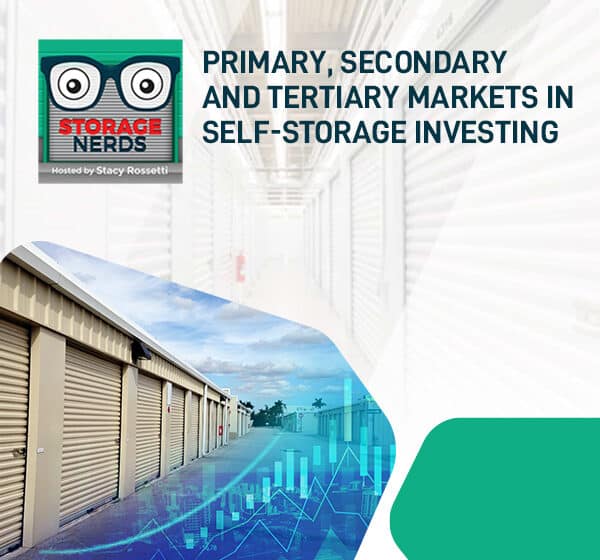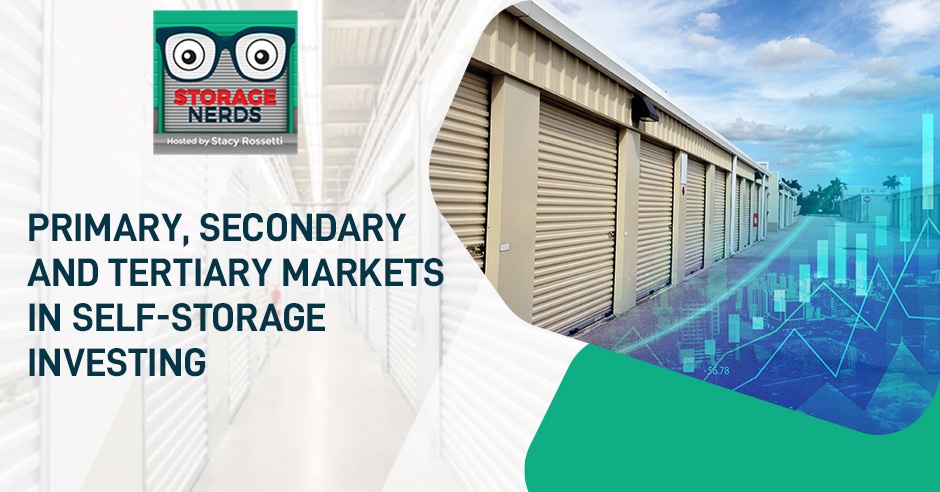
If you’re looking to get into self-storage, you have to understand the market that you’re in. Are you in a primary, secondary, tertiary, or sub-tertiary market? With the numerous existing markets, you need to keep track of all of them if you want to succeed in this business. You also need to know how much you want to spend and where you want to be looking.
Join Stacy Rossetti as she discusses the differences between primary, secondary, and tertiary markets. Discover insights into which market is best suited for you, and learn how to understand your market today!
—
Watch the episode here
Listen to the podcast here
Primary, Secondary And Tertiary Markets In Self-Storage Investing
I got a good topic for this episode. We’re trying to get settled and we bought a house. We lived in an RV for a year, and before the RV, we lived in a tiny house for three years. We traveled for most of that time. That’s why we lived in a tiny house. We got rid of everything that we owned. Now, we just moved into this 4,000 square feet house. We have no furniture. We bought a bed and the whole weekend, I was doing nothing but putting stuff together. It was horrible. I put two dressers together.
Pete, my husband, is gone for a few weeks. He’s trying to work on some of our storage facilities because we’re going to be gone in New York for a couple of weeks to hang out with family for the holidays and stuff. It’s just me and I’m sitting here putting all this furniture together and taking care of Lillian. My back is hurting from sitting on the ground and putting dressers together. I was up late every single night doing it. I do not understand the whole concept of sending you a piece of furniture and having you put that together. Why can’t you get the whole thing together? That’s my life right now. It’s buying furniture and putting it together. We still don’t even have a dining room table, couch, or anything like that. The only thing that we have to sit on is my bed. It’s been very interesting.
I appreciate you all tuning in. I’m going to talk about something super important and exciting to me. I’ve seen this with my student. It is the difference between primary, secondary, and tertiary markets. I want to get into that and talk about the market and how everything is changing because when I got into self-storage investing in 2016, prices were a lot cheaper and the cap rates were different. We’re going to talk about how the market has changed from when I got into the business in 2016 until now.
I’m going to show you how you can tell the difference because I’ve noticed when I talk to people that they don’t know the difference between those three markets. I figured we could spend the day on that and go over that. Again, if you have bought a storage facility or are already a person that owns storage, welcome. If you have not owned any storage and you’re looking to buy a storage facility, you are in the right place because that’s what I do. I teach people how to buy storage facilities.
Our Facilities
We have 11 of our own and then we have 2 in our Fund, the Self-storage Fund of America. It’s so funny because I made an offer on a facility a few months ago and I got it under contract. I’ve made an offer for $1.9 million and that’s the most expensive storage facility I’ve ever bought. You guys all know that I’m secondary and tertiary market. I’m used to smaller facilities. As we started to do due diligence, look at numbers, and things like this, then we changed our offer to $1.7 million. He said okay to that. We put it under contract for $1.7 million.
After we’ve been there and had 60 days to dig deep into this facility and look at economic occupancy versus physical occupancy, CapEx, and all this stuff, we then realized that the facility is only worth $1.4 million. We came back to the owner and told the owner that we wanted to change our offer. I said, “This is going to piss you off but the only price we could pay is $1.4 million. I’ve talked to my investors and looked at financing it, and $1.4 million is where everybody wants to be. That’s where we want to be and that’s where we feel comfortable.”
He was pissed. I would be pissed, too, because that’s $300,000 that’s gone. I talked to him and then I let him think about it and stuff. He didn’t talk to me for a few weeks. It was right after we got back from the holidays that I told him. He came back, messaged me, and said, “If you can do $1.425 million, then you can take the facility. I talked to my wife. Let’s hop on Zoom and discuss this. I want to finalize it.”
We went from $1.9 million to $1.7 million to $1.4 million on this facility. The facility is a great facility. It’s worth $3.3 million to $3.4 million, but the physical occupancy versus the economic occupancy is not good, honestly, and then there’s a warehouse on the property that he rents out. It’s a whole bunch of different units. There are six different spaces. He’s not making what he should be making. Also, the people that are there are ruining that whole place and stuff.
That building itself is going to take a lot of work. It’s a storage facility plus a warehouse. I want to make that warehouse into climate control, but I didn’t put that in the numbers or anything. When I look at numbers, I typically look at like, “What could it be doing right now?” Not like, “What if I added more spaces?”
Some people love developing. Some people look at a property and say, “I could add more space. I want more space.” I have a whole handful of students that I’m doing turnkey acquisitions for and they’re adamant, “I want a facility plus land,” because they want to add on and stuff. We are not those types of people. We like to buy, fixed-up, stabilize, and then sell.
In fact, the first four facilities that we bought, we’re going to be selling in January 2023 and list those out. I’m looking forward to selling those because not only am I going to make some money, but also, I get to go through that process because I’ve never sold a storage facility before. All of the facilities we’ve had, we’ve been holding onto them for the last couple of years. I’m excited to go through that process and who knows where the market is going to be. I talked about this last time.
When we list the property in January, it’s going to take us 3 to 6 months to sell the things. I will be listing my properties at 20% lower than what everybody else is listing. People might think, “That’s a lot of money, 20% lower?” The truth is that when you get into this business and figure this business out, buying a storage facility is not a big deal. To buy a storage facility, hold onto it for a couple of years, sell it, and then go buy another storage facility, that’s my protocol. That’s how me and Pete work. That’s our system.
For me, I don’t have to make top dollar on every single one of my facilities. I’m not going to hold on to my facilities until I get the highest point or whatever. In fact, what’s going to happen is I have $1 million in those 4 properties from private lenders and we’ll sell it for about $3 million. That $1 million from those private lenders don’t want that money back. I’ll be able to roll that money right into some deals. On top of that, I’ll be able to take my money that I have and put those into other deals.
For me, to sit there and push the numbers on $3.3 million, $3.5 million, or whatever because it couldn’t get that much, I’d rather sell those suckers and roll that money into more stuff and keep moving on. That’s my personality. There’s nothing wrong with this as well. I have a lot of students that have a number in their heads. This is exactly how sellers are too. They’re going to hold onto that number, especially if you only have one storage facility. You’re like, “I’ve got to make as much money as I possibly can on this property.” Keep that in mind from the seller’s point of view.
Sometimes when they only have one property, that’s their retirement and life. There are lots of livelihoods. They want to penny-pinch and get as much as they can, but the truth is you should get yourself into the position where you have a couple of these things or more than a couple, and then that way, you can rinse and repeat. You can sell and keep moving on. That’s where I’m at. We’re about to go through the liquidation process. I talked about this last time. We’re sitting with our CPAs, and I’m trying to figure out taxes, selling properties, tax sheltering, and what’s going to happen and all this stuff.
Get into a position where you have a couple of storage facilities so you can sell them. Buy, sell, rinse, and repeat. Share on X2023 Goals
I’m excited about 2023. It’s going to be good. I’m going to be prepared for 2023. I got into the real estate industry in 2010 or 2011, which was the perfect time to get in because I was coming in an upswing. It was from the downswing to the upswing. This time is when I was doing rehab. It was a great time to do rehabs because everything was super cheap and you could buy discounted prices and stuff like that. The truth is I’ve honestly never been through a downswing. 2010 and 2011 has been an upswing because this is one of the longest markets that it’s been going upwards. Supposedly, we’re going down now. I’m excited to go through a downswing. The good thing is that I’ve been through half of a cycle to where I know and I was educated to prepare for the down cycle. I’m prepared and ready.
For all the newbies out there, you may be getting started and maybe you’re not in the same position as I am, but the truth is that you are in a cycle. Learn how to navigate that cycle because I’ve learned, over the past several years I’ve been doing this, that real estate is nothing but a cycle, and every couple of years, it shifts into something else. It was rehabbing and then all of a sudden, multifamily was awesome. Commercial real estate started building up. Now, everybody is in industrial and storage. Now we’re coming into the downturn.

What’s going to be important? Buy and hold, creative deal structuring, and owner-financing because the reason why is because banks are so conservative. They’re ridiculous. Did the numbers come out? I can’t remember. I haven’t looked at the news all day because I’ve been busy. If it goes up 0.5 points or 75 basis points or whatever, it’s going to be at 8%. I’m telling my students right now to run their numbers at 8% to 8.5%. If you’re going to close on a property within the next 90 to 120 days, you’re probably going to be in the 8% mark. Banks are being super conservative with all this stuff.
It’s a cycle. It’s going to last for a couple of years and then you’re going to go into something else. It is what it is. Be strong, be smart, educate yourself, surround yourself with people that you want to become, keep moving forward, keep taking action, talk to as many owners as you possibly can, and make as many offers as you possibly can. You’ll find a couple of good deals. In storage, I started looking at 2016 and bought our first facility in 2017. I’m already a couple of years in that we’re already like this. The reason why is because I keep moving forward. I have momentum and take action even when I screw up. I had a rehab and lost a lot of money on that.
That set me back for a couple of years, but I kept pushing forward and moving forward. I had a goal of one storage facility a year. That’s why I tell my students, “One facility a year is a very good goal to have.” As you keep getting into this and after the 1st, 2nd, and 3rd years of you doing this, all of a sudden, it gets easier and easier. One facility a year is a great goal. If you guys have any goals about real estate investing for 2023 or if you have any goals for storage investing, I would love for you to put them out into the world so the world hears them and manifest them for you. It’s important to tell people about what your goals are because what it does is holds you accountable.
One facility a year is a very good goal to have. Share on XThat’s why I’m an open book, honestly. I’m telling you guys what I’m doing. That means I have to do it if I’m telling you what I’m doing because I’m out in the world. I’d love to hear what your goals are for 2023. Everybody should be planning them. I start planning 2023 in October. That’s where I’m at and to give everybody the purchase good. Rachel says she wants to purchase her first facility in 2023. She has a very good goal. Keep your eye on that goal. Keep coming to the Monday night sessions and I’ll be there to at least educate you except the Monday after Christmas and the Monday after New Year’s. I’m going to take two weeks off because I’m traveling with my family and all this stuff. The next Monday, I’ll be here, which is December 19th, 2022 and then after that, I’m going to take the 26th and January 2nd off.
Aida said, “I want to purchase my first facility before Summer 2023.” I like that she says I want. That’s a good one. The doors to StorageNerds, the coaching program, and the mastermind open up on January 8th, 2023. Make sure that you get on the waitlist at TheStorageNerds.com. That way, if you are interested in getting coaching, then you can get notified to talk to me about it. I only take about twenty students or so. That’s where I’m at. You want to get on the waitlist and discuss it with me and then see if it’s a good fit for you.
Rachel says, “We’re scheduled to meet. I’d like to buy my first storage facility in 2023.” You are the only people that have goals. Nobody else has a goal for next year. That’s good to know. Let’s try to have a goal for next year. One storage facility is a good goal if you’re interested in storage now. Ariel Lyn says, “Other people are doing it.” Thank you. Thea says she’s got to have her own storage facility and Jim is going to buy one in New Hampshire and maybe another one in North Carolina. I love it.
Primary Markets
What’s the difference between primary, secondary, and tertiary markets? The primary market is metro cities like Atlanta, Nashville, San Diego, Los Angeles, and Phoenix. In the commercial industry, you have primary, secondary, and tertiary. Primary is the big cities but even smaller cities. For instance, I live in Tallahassee, which has only 200,000 people in it, but it does have a primary market. When you go to a primary market and search storage, you will see CubeSmarts, Extra Spaces, Life Storage, Public Storage, and whatever it is. You’ll see these funds or huge big box companies. You know that you’re in a primary market if you see those.
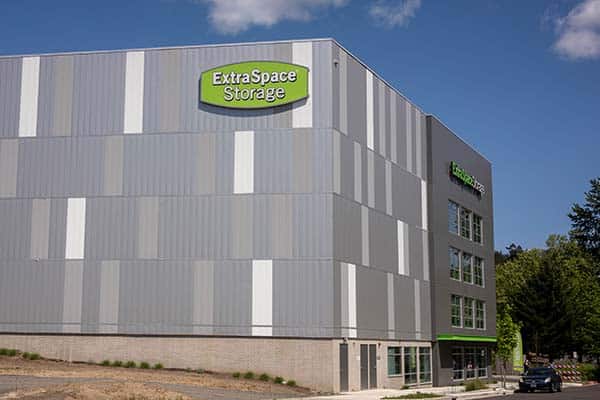
The primary market is the easy one. We know all these big cities are the primary market. The question is, what are secondary and tertiary markets? Let’s get into that since we know what a primary market is. As I said, I’m in Tallahassee. The population is very important. There are 200,000 people that live in Tallahassee, but you want to get into your Google Maps and search the word storage wherever you’re at. You can see all the big box companies. You could see CubeSmarts, StorageQuest, Storage King, Otter Self Storage, Prime Storage, and Extra Space. These are all bigger ones. When you look at these facilities, they’re all indoor and have huge outdoor spaces. We all know these are going to be the primary market.
These facilities here are going to be $3 million, $4 million, $5 million, or $10 million. These facilities are huge. I drive by a CubeSmart every day to drop Lillian off at school. It’s outdoor and indoor storage. On the outside, it looks beat up. They’re making these pictures look good. They must have a professional photographer come in and take a look at it. What happened to this facility is that CubeSmart is managing it.
There are different types of facilities. CubeSmart, Extra Space, and Public Storage will come in and build a facility, and then they manage them, especially CubeSmart. They do a lot of managing other people’s facilities. Another thing is where this location is not like in Tallahassee. It’s out in the middle of nowhere, but this CubeSmart is there. That makes me believe that CubeSmart is managing this facility as well. You can always notice that. There’s a Bradford Mini-Storage and it’s a nice big facility. It looks a little bit older but not too bad. There’s one Morningstar as well. Familiarize yourself with what a primary market looks like.
Secondary Markets
When I pull out into the panhandle of the panhandle, this area is going to be all tertiary. Where is the secondary market? I would consider this to be a primary market and CubeSmart a secondary market on the outside, but maybe a primary market. Anything outside of this area is what I would consider a tertiary market. I don’t think Tallahassee has a secondary market.
We own a facility in Valdosta and it has 75,000 people. Valdosta is a secondary market. It’s a standalone city not connected to any other city that’s a good size. In your state, try to think of some cities that might have this. In a secondary market, you are going to notice that the players are different. For instance, 10 Federal Storage is a fund that buys facilities not in primary markets but in secondary markets. They buy facilities in smaller markets, fix them up, make them look nice, and then manage them.
I noticed that in a secondary market, the players are going to be different than in a primary market. The primary market is going to be like hedge funds, big box, huge companies, and stuff, and the secondary market is going to be medium. Their colors are always red and tan. They come in, paint their facilities the same color every single time, and then also do a whole bunch of technology. There’s always an office. They got a nice gate, paint it red and white, and inside, they have a kiosk, and then you can rent your space there. There’s no person that man this.
Whereas in a primary market, a lot of the times, you’ll have somebody there manning the facility. Once you get into secondary markets, it’s remotely managed. In secondary markets, you have a lot of storage facilities that are bigger, but they’re owned by 1 or 2 people. 10 Federal is here twice, but then you have A&M. It’s a bigger one because it’s got this office, but it’s probably owned by one person or maybe he owns a couple of them, and that’s it. This is what a typical secondary market would be.
Also, in these types of cities are good to look for facilities that have not been bought yet by the bigger players. Let’s look at Bill’s Self Storage and this one is looking pretty good. He’s got a little charting with his prices and stuff. You don’t want to ever put your prices on a sign because your prices should be dynamic. Your prices are up and down with the market. I’d be talking to Bill and seeing if he wants to sell. It looks like it’s a little bit newer or maybe he added it. You can pay here with your phone. It’s good to look at the pictures so you can see it. You could call them and they could pay for you right here or you could put the money right into your slot. This would be an older facility if he was running it like that.
You don't ever want to put your prices on a sign because you want your prices to be dynamic. Share on XThis is a very good one to try to call and talk to the owner and see if he wants to sell. This type of secondary market is a great area to be looking in, especially right now, and talking to owners and seeing if they want to sell. A lot of them are going to say no, they don’t want to sell, but at least you can introduce yourself. Think about your area if there are some secondary markets.
The population is super important in storage. You want to search population by city. Let’s say Georgia. You’re then going to go to the list and you’re going to start looking at the population and seeing what it is. Valdosta has 55,000 people in it. It’s interesting to look at the population because Atlanta has 514,000. Columbus has 210,000 and Augusta has 200,000. These are probably going to be the primary markets. I say a primary market is 100,000 or more. Sandy Springs has 110,000 and Athens has 130,000. These are secondary markets.
The truth is if you look at Atlanta and Sandy Springs, this is Metro Atlanta. It’s massive. I would say Alpharetta, Acworth, and Marietta are not inside the City of Atlanta, but they’re suburbs of Atlanta. They’re in the Atlanta market. Honestly, the whole area from Cartersville, Cumming, Flowery Branch, and then all the way down is primary market.
Unless you can afford millions of dollars, I would not be looking at the suburbs of the city that you live in or the city. If you’re living in any city like Knoxville, Greensboro, or whatever, it doesn’t matter. For instance, Charlotte, I’ve been all up in this area driving for storage. I would consider Gastonia a primary market. It’s further away, but I’ve driven all on this. All that area is all primary market. Even though it’s not in the main metro city area, it’s primary market.
The secondary market to me is a standalone city of 100,000 people or less. We bought a facility in Macon. That’d be considered a primary than a secondary market. Also, another thing that I would like to consider is what I call the secondary market and then the sub-secondary market. If you were in this metro area, where on the outskirts of this city moving to that you could possibly look at to purchase in?
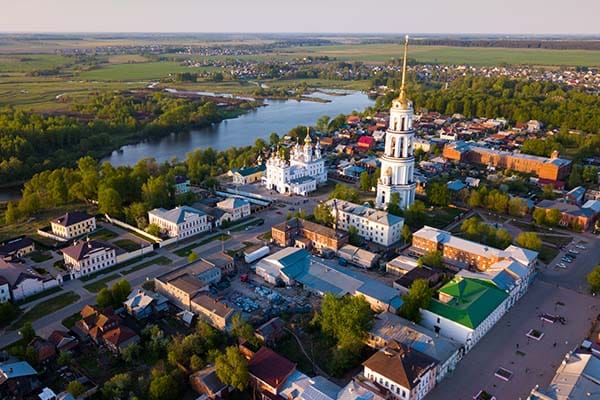
I don’t know the direction of where Charlotte’s moving to, but I’ve driven from Charlotte to Columbia and I feel like this area in between is a great area to invest in. It’s expensive. We look at storage facilities all in this area, but I feel like this would be a sub-secondary market because it’s in between Columbia and Charlotte. Even though it’s tertiary and you’re going through the country, it’s a little bit more expensive.
The population of Columbia is 137,000 people. I would consider that to be a primary market. You can see Extra Space and LifeStorage. It’s all primary market is where this is. I don’t know which way Columbia is moving, but I’m guessing Blythewood would be considered a secondary market. Public Storage is all the way up here. It’s moving up. If you want to invest in some land, in-between Charlotte and Columbia are great places to invest in some lands and build storage.
Columbia to Augusta is the same concept. This is going to be a secondary to sub-secondary market. I’m calling them sub-secondaries. It’s not a secondary market, but it will eventually become a secondary market. I feel like this area’s going to be growing. A lot of stuff is going to be built in between these two towns because Augusta is on the top 10 cities to buy real estate in right now, according to Realtor.com or something. I just read that. I don’t know if anybody else read that. I thought that was very interesting. This is a very fast-growing area and Columbia’s a great area to invest in if you have a little bit more money. Think about that. Charleston is a huge metro area and then outside would be your secondary market.
Augusta is in the top 10 cities in which to buy real estate. Share on XTertiary Markets
If you don’t have a lot of money and you want to buy a storage facility, it’s the country. That’s what the tertiary market is. That’s what you should be looking at. What you would do is try to pick the area that you want to be in. If we are in the Augusta area, it’s moving up into the area. Evans is a super popular and nicer area.
Aiken is a very good corridor. Aiken has 30,000 people so that’s a good size city to be looking in. The primary market is 100,000 or more and then the secondary market is 25,000 to 100,000. The tertiary market is 25,000 or less. You then have the sub-tertiary market. The sub-tertiary market is 5,000 or less and the sub-secondary market would be 25,000 to 60,000 or 75,000 or something like that. Figure out what your market is.
I started out with the sub-tertiary market, and then I went to the tertiary market. I then moved up to the sub-secondary market and moved to the secondary market. Now, we bought something in Macon, which is 160,000 people, which would be considered a primary market but I would call Macon a sub-primary market.
Think about what level you’re at because you want to focus. If you only have so much money, you can only afford so much storage facilities. Are you a sub-tertiary market with a population of 5,000 or less? Are you a tertiary market with 5,000 to 25,000? Are you a sub-secondary market with 25,000 to maybe 50,000? Are you a secondary market which is 50,000 to 100,000? Are you a sub-primary market that has 100,000 to 200,000? Are you a primary market that has 200,000 or more? I want to be right in the middle.
In terms of pricing, if you can’t come up with any money, you’re like, “I got no money but I want to get into storage,” then you should be wholesaling self-storage. I always say this. There are not enough wholesalers out there that know how to truly wholesale. If you don’t know how to wholesale, then you should buy my course because I teach this, but wholesaling is good for the tertiary market. Your buyer is going to be sub-tertiary and tertiary markets. That is where you’re going to find a property that’s a couple of hundred thousand dollars but you can wholesale and make $25,000 to $50,000. That’s a good starting point.
There are not enough wholesalers out there that know how to truly wholesale. Share on XSub-tertiary and tertiary markets are a couple hundred thousand dollars or $500,000 or less. If you can only come up with $50,000, that’s a sub-tertiary, and if you have $100,000, that could be tertiary to maybe a sub-secondary. You’re like, “I can come up with $100,000 and my partner can come up with $100,000.” Now, you have $200,000. You now have a $1 million property. $1 million can get you a good sub-secondary to a secondary market.
Every once in a while, you’ll find a bad deal in a good city, like a totally mismanaged storage facility in a bad city. Mismanaged facilities are the ones that are the diamonds in the rough. You can always find these in all the different markets. For instance, I bought the ugliest storage facility in Macon, and it’s a population of 150,000 people. You can always do this. There are always exceptions to the rule. Typically, a couple of hundred thousand dollars is going to get you a sub-tertiary to a tertiary market. If you’re trying to get your first facility and looking in Augusta for a facility that’s $300,000, that’s not going to work. Gone are those days. That’s the days when I first started when nobody wanted to get in storage.
Aiken, Williston, Blackville, Denmark, Bamberg, and Branchville would be great corridors to be talking to every storage facility owner in this area. Think about good areas that you could be looking at. It’s doesn’t have to be around the highway, but what about if you go up from Florence to Darlington and Hartsville? You could get into Bethune with 315 people. It’s a very small town and even the smallest towns have storage.
One of the very first facilities that I bought was in a town of 315 people. The 10-mile radius was 6,000 people and I bought it for $100,000. It’s 60 units and it’s completely full. I haven’t been there in years, and there’s one guy that mows the place and then does the overlocks. He’ll clean it out and we pay him $300 a month. That thing is worth at least $250,000 to $300,000 and we haven’t done anything to it in years.
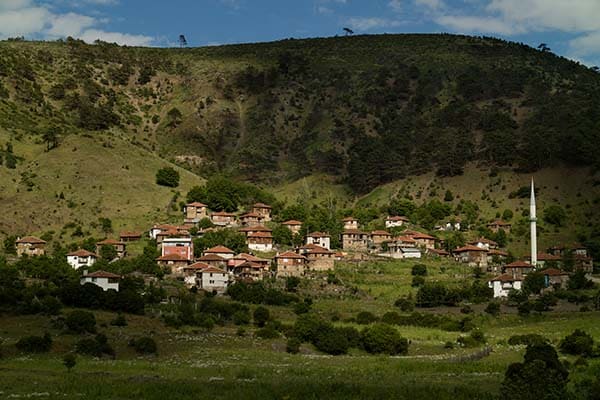
There’s nothing wrong with starting out in a sub-tertiary market. I’ll be able to take that $100,000 to $150,000 and then 1031 exchange that into another deal. That $100,000 I borrowed from the investor, he will let me roll that into whatever deal I buy. Think about the areas that you want to be in. It doesn’t matter what area depending on how much you want to spend, look for corridors where it comes out. Sometimes it’s super tertiary. Missouri is a tertiary except around the touristy areas and stuff.
Arkansas is very tertiary. There’s a lot of country in Arkansas, but there are a lot of good areas. The area from Little Rock all the way up to Fayetteville is a very good area to invest in and I would honestly consider most of this to be a secondary market. You then have a lot of little tiny towns. I have virtual assistants calling storage facility owners in these little tiny towns. Even in these little tiny towns, facilities are anywhere from $250,000 to $1 million. I talked to one lady and it was a town of 30,000 people. She wanted $1.4 million.
Where You Should Be Looking
If you don’t have a lot of money, you should be looking at the sub-tertiary, tertiary, and sub-secondary markets. I came up with these new levels of the market. Sub-tertiary is 5,000 or less. Tertiary is 5,000 to 25,000. Depending on your state is going to determine the value of that facility. If you’re living in Massachusetts, which is one of the most expensive places to live, a tertiary market is going to cost way more than if you’re in Arkansas.
You have the sub-secondary and the secondary market and then the sub-primary and the primary. If you’re in Nashville and all the suburbs of Nashville would be sub-primary. Maybe there’s a standalone town in Tennessee that has 150,000 people in it. That could be a sub-primary town. I wouldn’t call that a secondary town. In a town of 150,000 to 200,000 people, like in Tallahassee, you’ll have Extra Spaces and CubeSmarts.
What I’m telling you is what they are doing internally. They have a whole team that does this, except they focus on primary and sub-primary markets. We are the little people focusing on sub-tertiary, tertiary, sub-secondary, and secondary. Right now, there’s that middle ground. Some of these bigger players, like 10 Federal Storage, are big in Atlanta. A couple of years ago, when I first got started, they were buying in Atlanta. They got pushed out of Atlanta because Atlanta got too expensive so they moved to Valdosta. You have this movement.
The hedge funds can always go wherever they want to go, but these secondary players and then tertiary players like me own a lot of facilities in sub-secondary and tertiary markets. There’s a lot of movement right now from up to down because prices are so expensive. For people like me where I’m like, “I can move on to the next level. Let me go buy something bigger.” People are buying and selling storage facilities. There are so many storage facilities for sale. There are 700 storage facilities in Crexi right now. I’ve never seen that much. It’s crazy. When I first got started, there were 200. There’s a lot of opportunity, but you have to understand the market.
That is this episode’s lesson. Next episode’s lesson, we’re going to take those markets that I created, the sixth of them, and we’re going to go through the cap rate. Now, you know all the different levels of all the different markets out there and how to find them. Your homework is to go and try to figure out which markets you’re interested in. I saw some tertiary and wholesaling.
Next time, we’re going to talk about what is the market cap rate for each one of those levels. I am going to hop off and go to my Fund. It’s StacyRosetti.com/Fund. Make sure that you come to hang out with me if you want to be a passive investor and put your money into the fund. I appreciate you guys hanging on to the end. I will see you guys at the next session. Take care.

